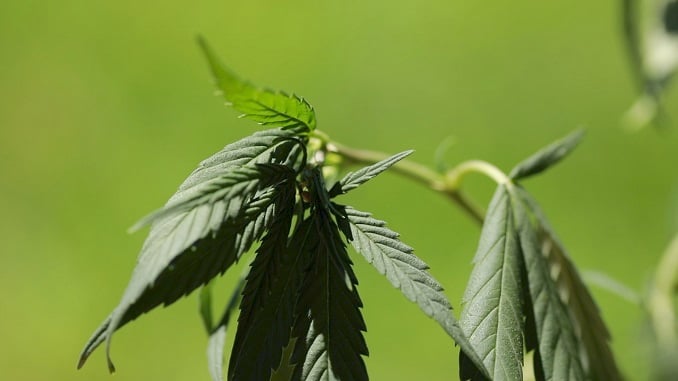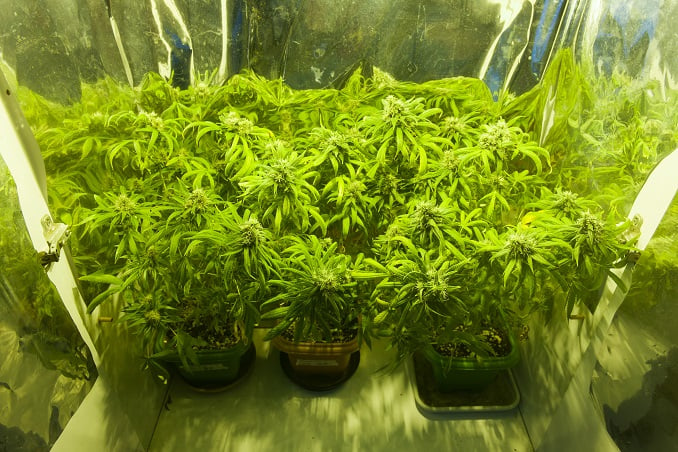Recognising Heat Stress In Cannabis Plants
Published :
Sep 27, 2017
Categories :
Cannabis cultivation

While heat is a necessary component of healthy cannabis plant growth, overheating can cause adverse reactions that will detract from proper development and ultimately, the quality of your yield. Find out how to recognise and prevent heat stress from damaging your crop.
All plants require heat to grow and develop properly. Too much heat, however can be destructive. Below, we attempt to find a balance below the upper threshold of how much heat your plants can handle.
Temperature plays a huge role in a plant’s life. When it becomes too cold, plants cannot grow or even germinate from their seeds. A stable temperature will help young plants develop root systems faster. By keeping track of night temperatures, you can make sure that above-ground growth, that means leaves and stems, will also be abundant.
Essentially, when your marijuana plants get too cold, their growth is stunted, slowed down, or in some cases, halted completely. And while heat prevents this from occurring, there is also such a thing as too much heat for your cannabis plants.

SIGNS OF OVERHEATING
There are several signs that indicate your plants are suffering from heat stress. First, the ends of leaves will start to curl up - a phenomenon easily and often confused with overfeeding. The main difference between heat stress and overfeeding is that with the former, the entire sides of the leaf will curl up, not just the ends. Also unlike overfeeding, leaf ends will not become “burned” by nutrients. Therefore, be on the lookout for curling leaves unaccompanied by other overfeeding symptoms.
If there is very low humidity in your grow room, or your local climate is very arid, cannabis plants are more prone to developing “cupped” leaves from the heat. Even though the heat might not appear to be very harsh, when combined with low-humidity, the two can wreak havoc on your plants. Especially when you want to keep your plants in low humidity to combat top rot, keep a very close eye on your leaves’ edges.
Flowering plants are even more susceptible to heat stress. If too many leaves become damaged by overheating, the cannabis plant will respond by growing buds with lower potential. This abnormal formation of buds can manifest in what is known as “foxtailing,” which usually occurs in buds closest to your grow light.
The buds may also display new growth at a much higher rate toward the top of the bud than on the bottom. These newly formed pistils are usually white and give the appearance that the bud is not ready for harvest. If this happens, it is a telltale sign of overheated cannabis plants. Upon deciding when to harvest your plants, pay attention to the lower end of the buds as this will give you the best indication of their actual maturity.
HOW TO HELP YOUR PLANTS KEEP THEIR COOL OUTSIDE
There are several ways to help your plants withstand higher temperatures or recover from past heat damage. The availability of solutions, however mostly depends on the environment that you are growing in. The most universal solution is to make sure you have adequate temperature monitors in place. These help to detect if your grow lights are too close or if the sun might be too intense for your plants on certain days.

Outdoor growing may leave you with fewer options concerning temperature regulation, but there are still tactics that can be used to help your plants survive blistering temperatures. The root system appears to be very helpful in preventing heat damage to the upper regions of your cannabis plants. A frequent and thorough watering schedule, if possible adjusted to the current weather forecast, is a good way of keeping your plant’s root system cool. Another option is to dig a hole in the ground (about as deep as the height of your pots) and put the plant, including the pot, in there. The cooler temperature from the ground should take some of the heat off of your plants.
Using pots that insulate can also help a great deal in preventing heat stress or damage. Planting pots made out of ceramic help a lot with insulation and keep the heat out. If insulation is still not enough of a measure to keep your plants safe from the heat, consider moving the potted plants to a shaded area. Putting up an old sheet or tarp takes away most of the direct heat.
PREVENTING HEAT STRESS INDOORS
Heat stress solutions for indoor growing mostly revolve around increasing the air circulation inside your grow space. Consider increasing the distance between your plants and the light source. If this is not possible, an oscillating fan that blows over the top of your plants might be a good alternative. The fan ensures that the heat is dispersed more evenly across the grow space.
Another option is to vent out the hot air by using an exhaust system. This might release aromas of marijuana into the rest of the growing area, so adding a carbon scrubber to remove all traces of scent might be a good idea if you are engaging in a stealth operation.
This last tip also applies to outdoor growers, seeing as it helps with situations in which the damage has already been done and you want to help your plants recover: seaweed kelp extract. It comes as a liquid fertiliser and in addition to containing nutrients and minerals, it contains cytokinins, which are highly beneficial in reducing stress. This extract helps your plants recover from heat stress and even has the power to help protect them more effectively in the event of future cases.







































